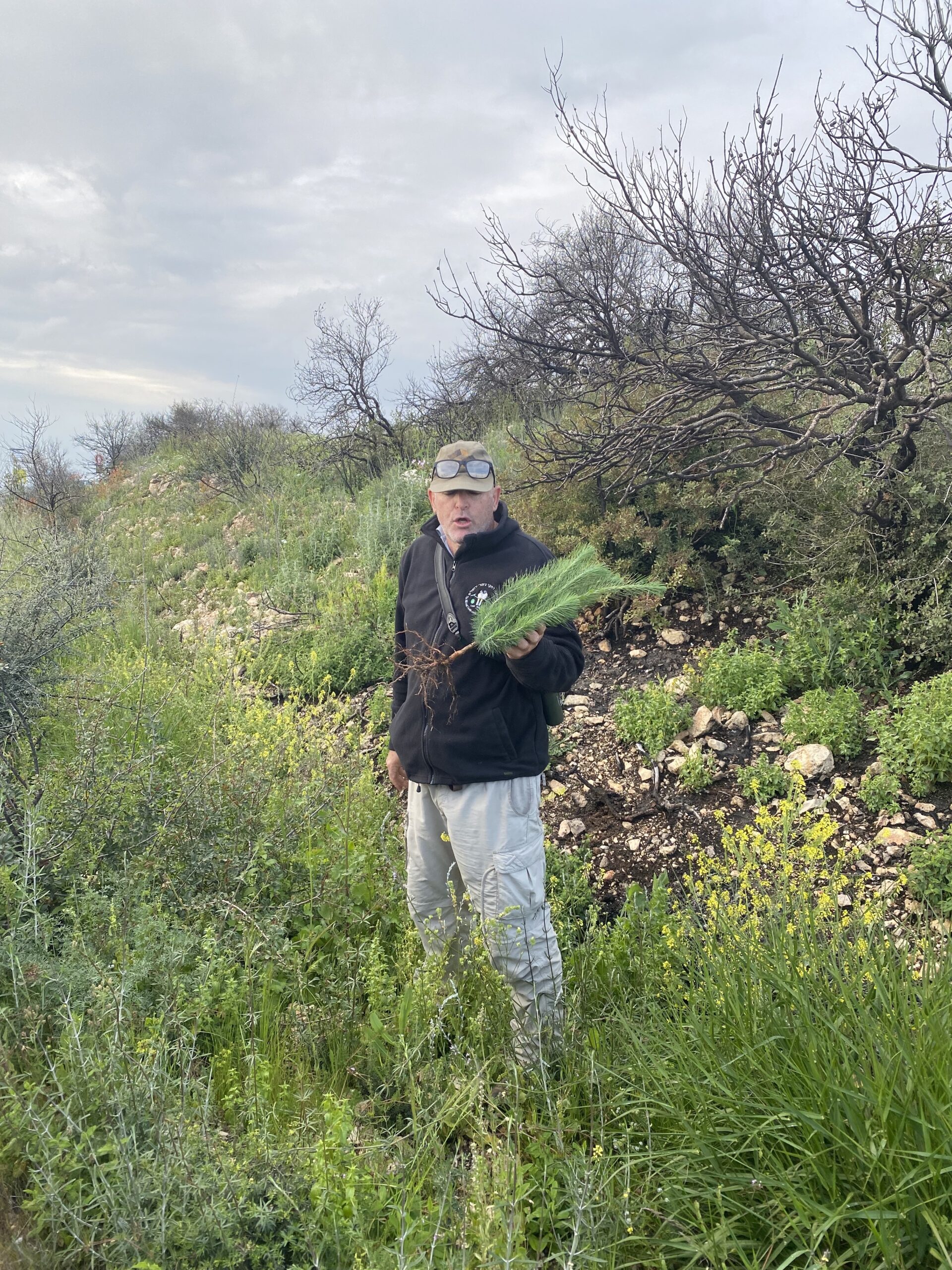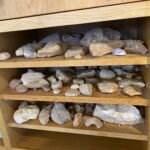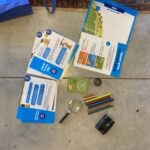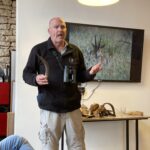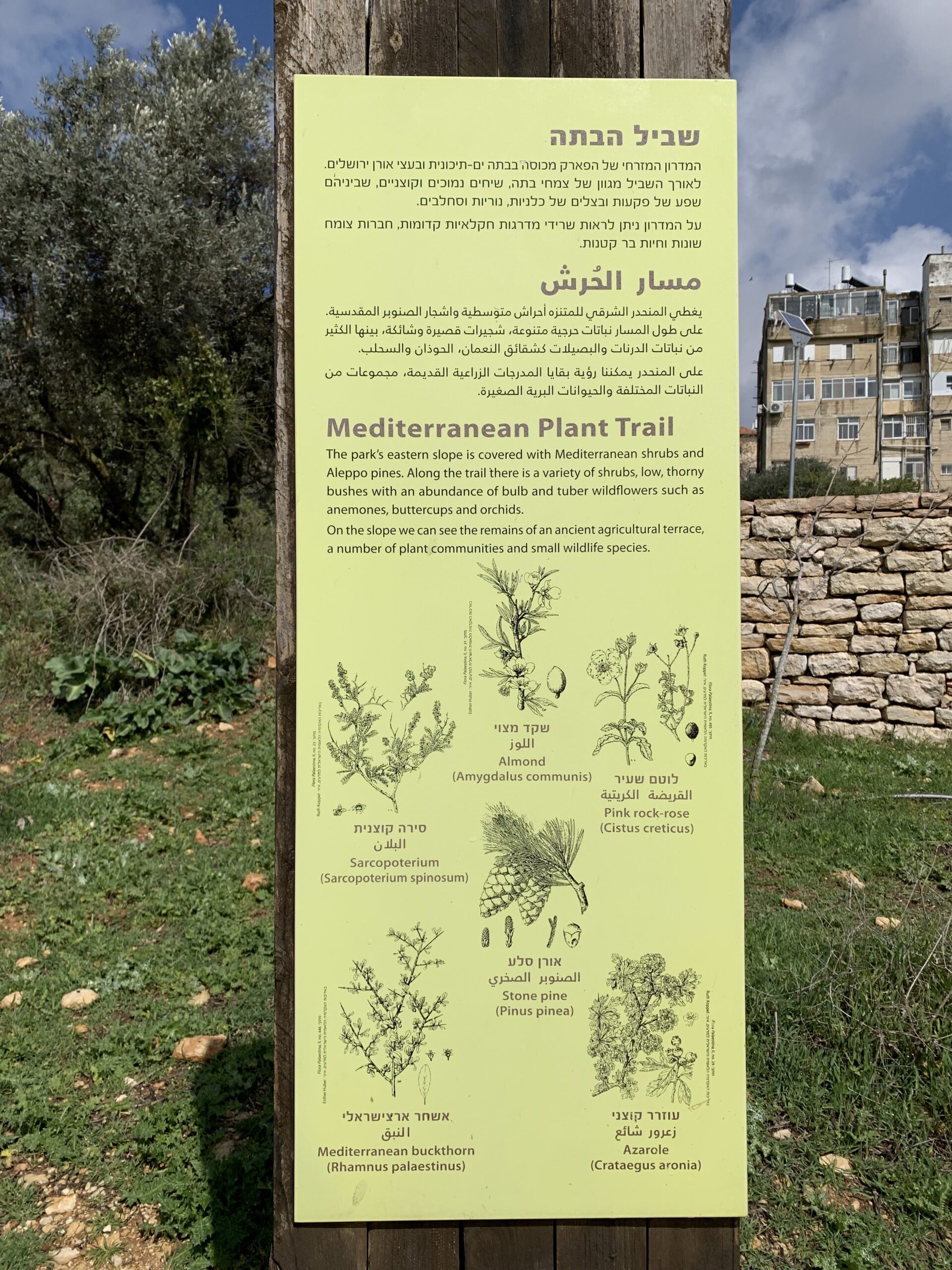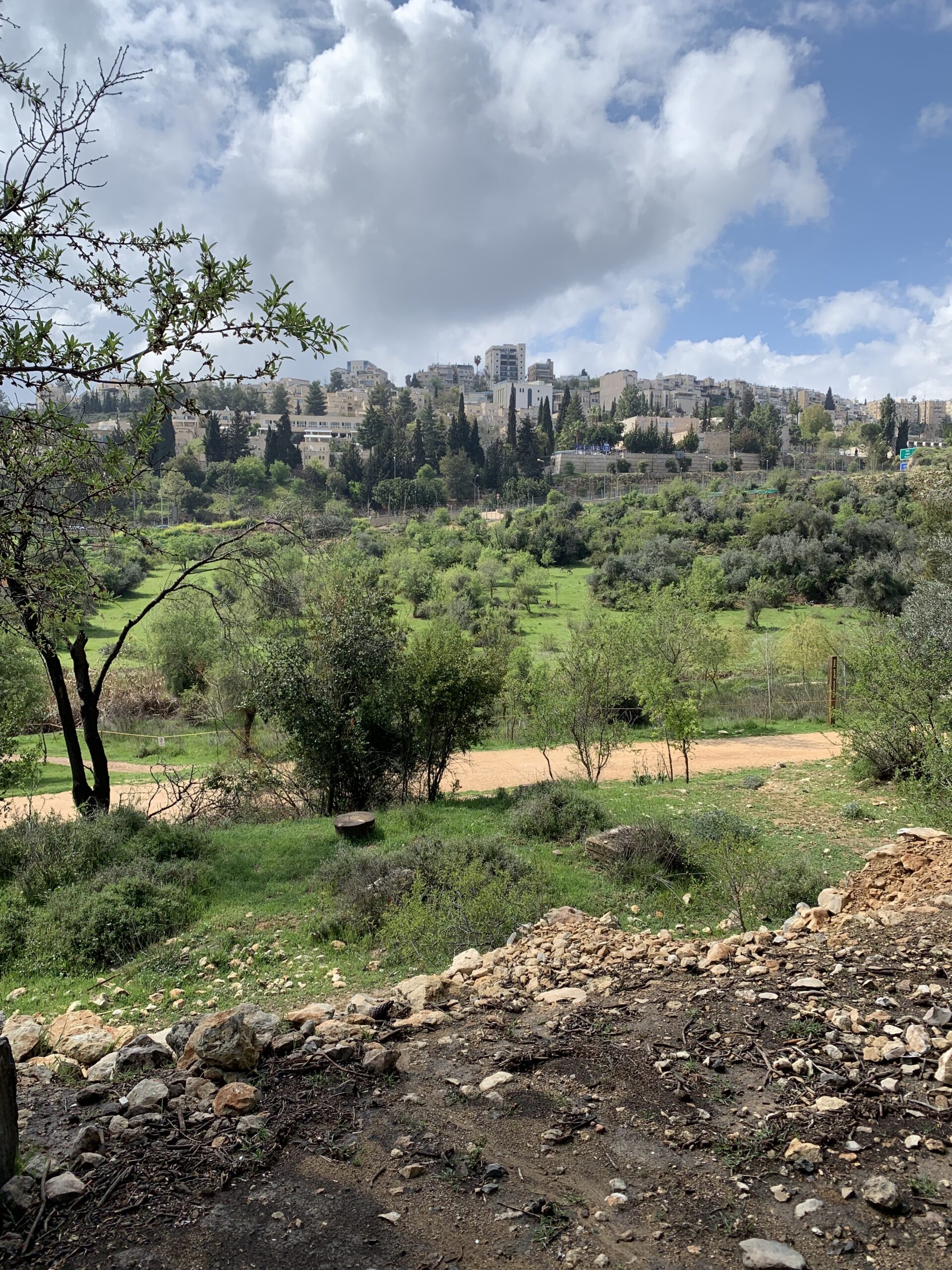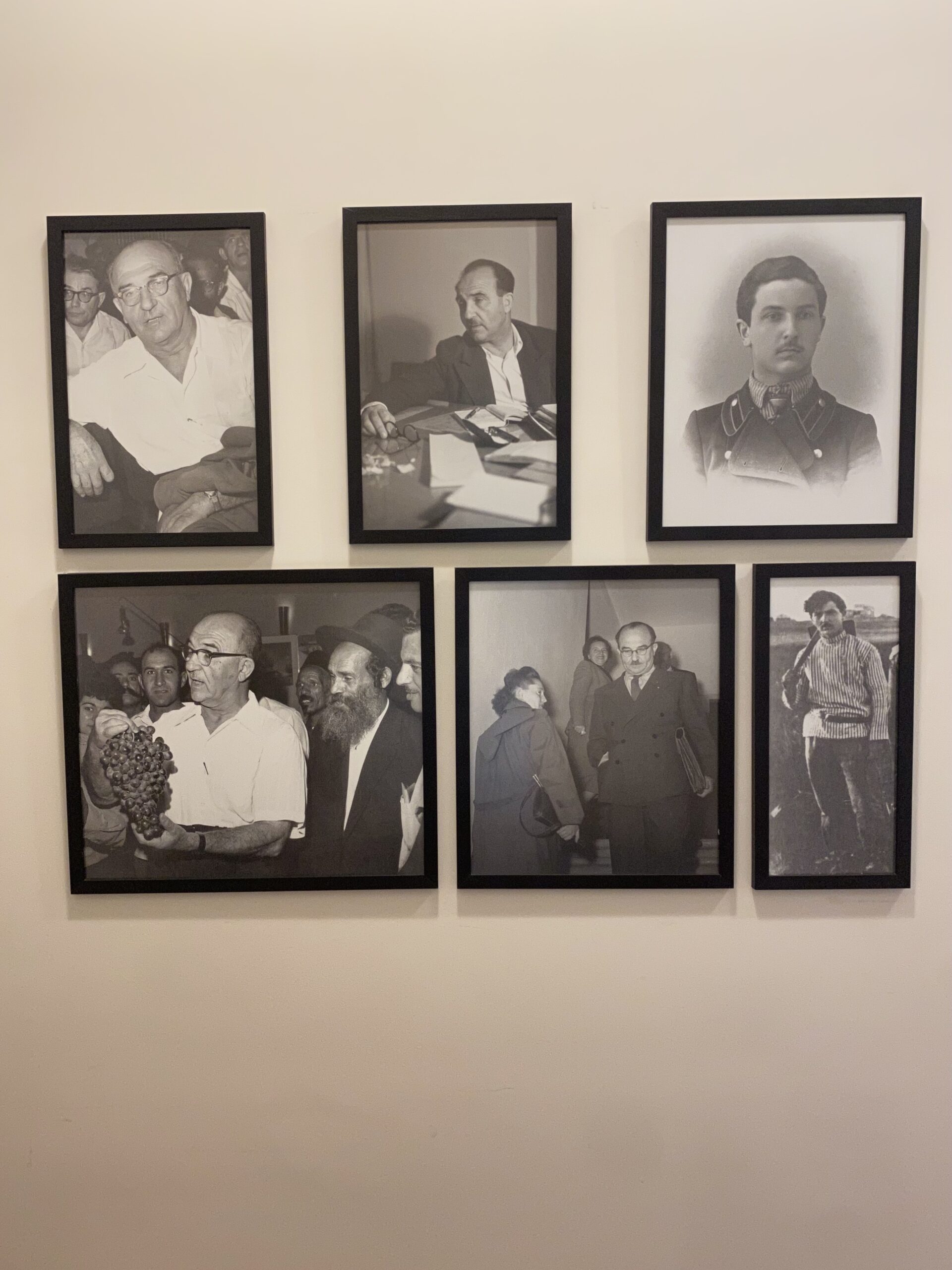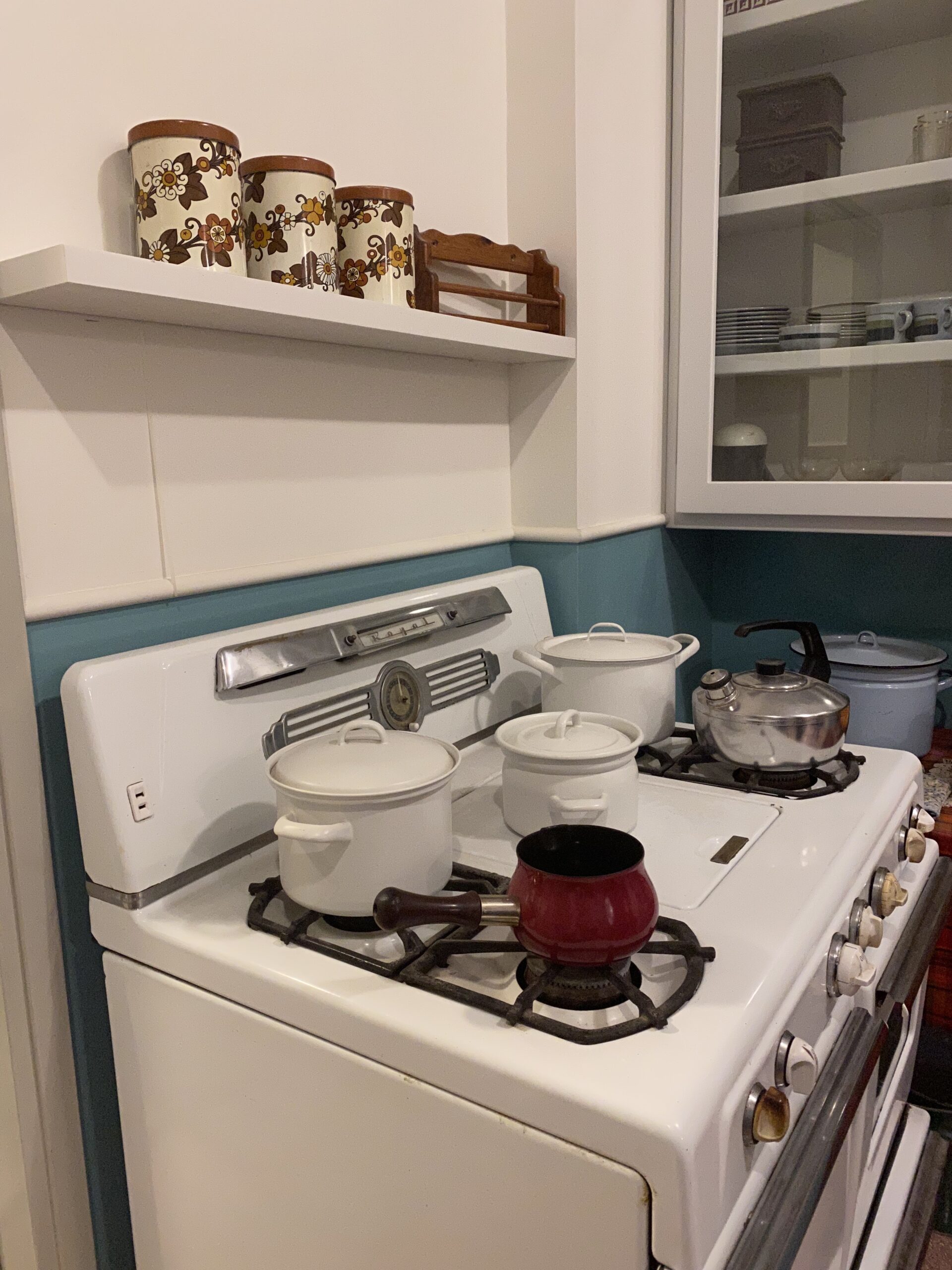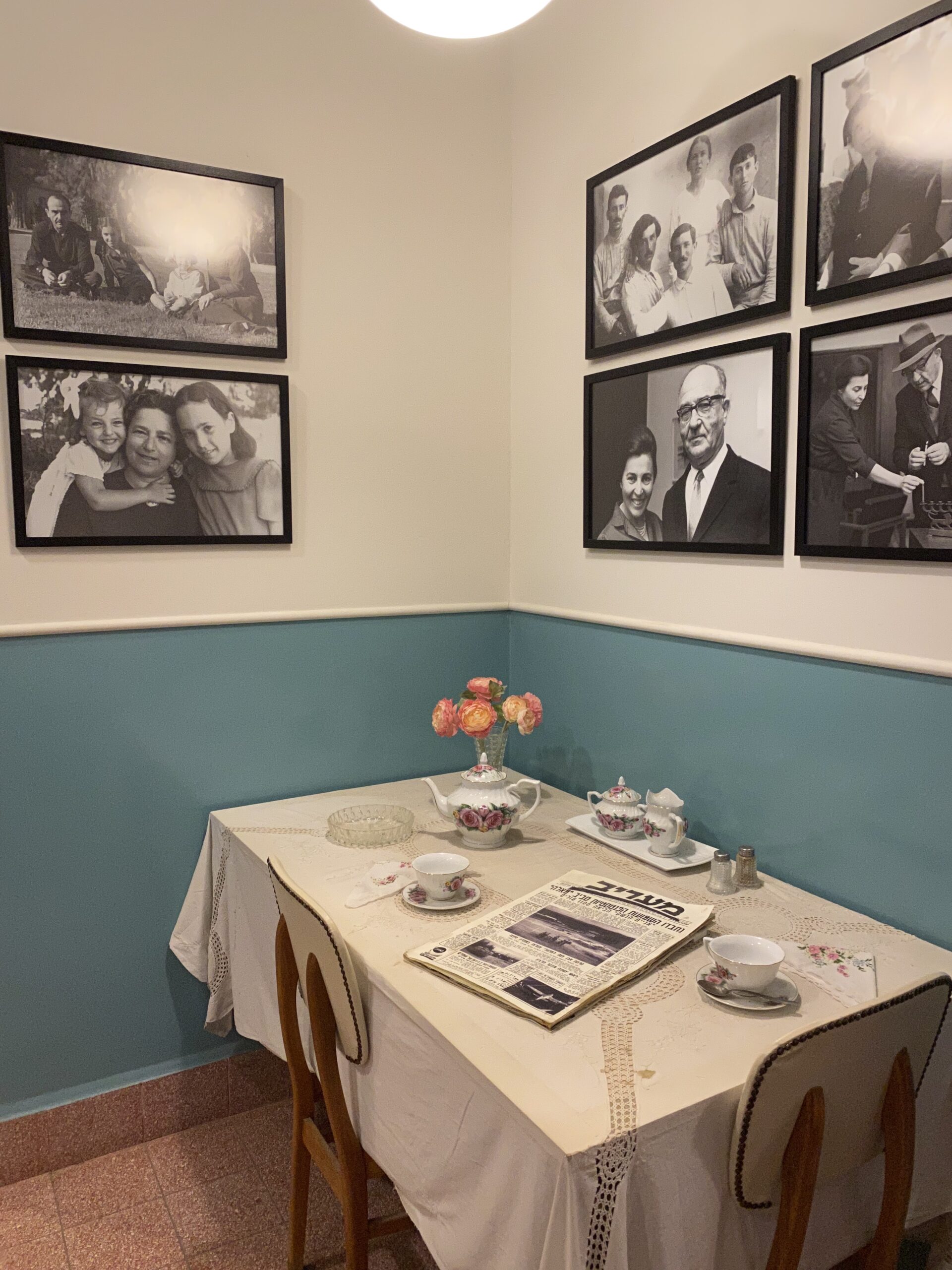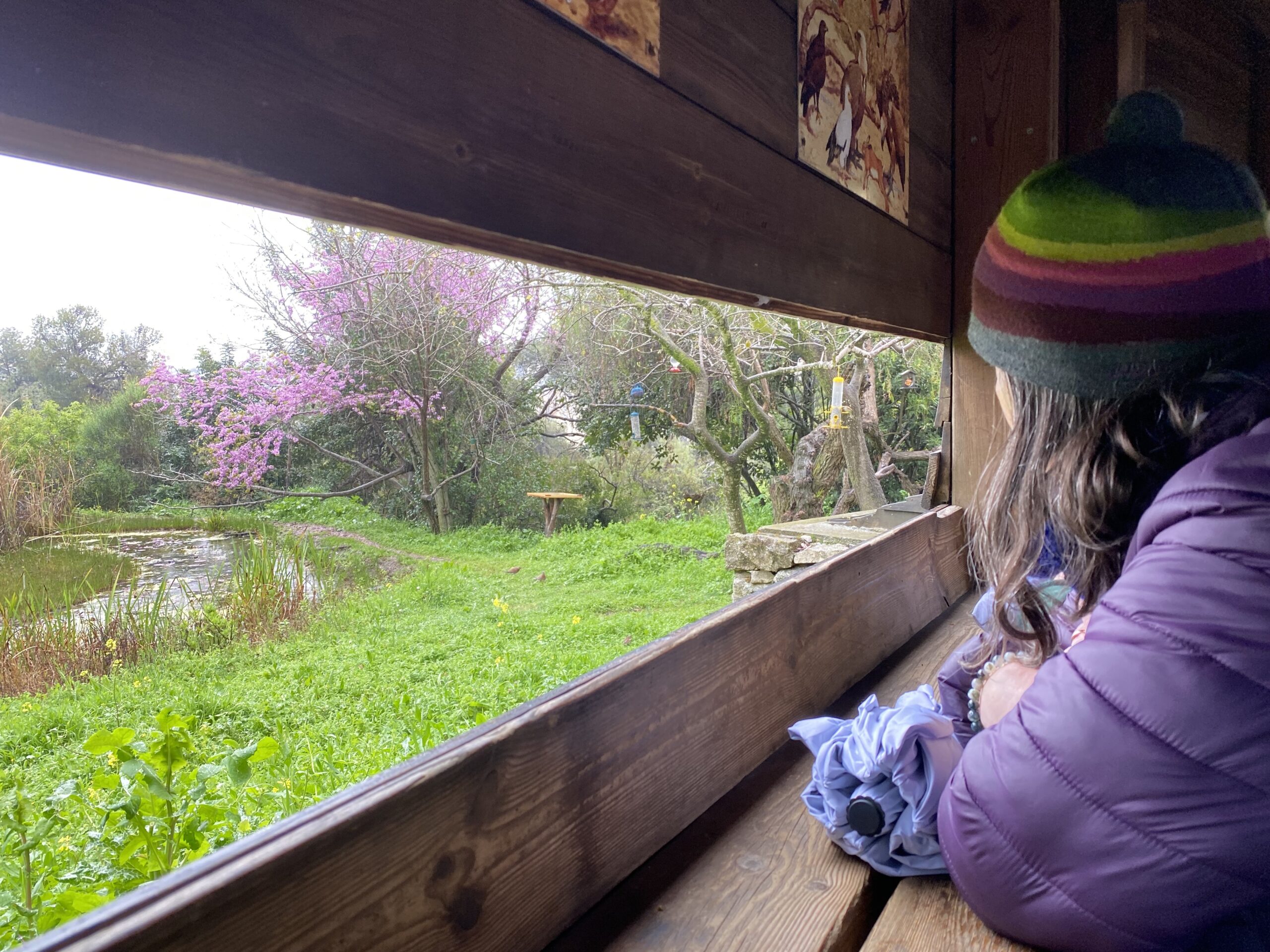
19 Mar March 19, 2023: Day 1
Nili and David Jerusalem Bird Observatory
When Yossi Leshem, former CEO of SPNI, approached the mayor of Jerusalem, Teddy Kollek, about funding bird research in the holy city, things looked bleak. Kollek told Leshem, “Jerusalem is about archaeology and religion, not birds.” Yossi Leshem famously stomped on the table and said,
“Mr. Mayor you don’t understand, Jerusalem is about birds too!”
We made our way to the Nili and David Jerusalem Bird Observatory (JBO) around 8:00 this morning. Jay Shofet informed us that around 50,000 schoolkids come through the JBO every year, from schools of every denomination and age range, but today it seemed like we would have the place to ourselves due to the weather. It was cold and windy and raining a bit, but the birds were still out appreciating this acre and a half of land, and so were we.

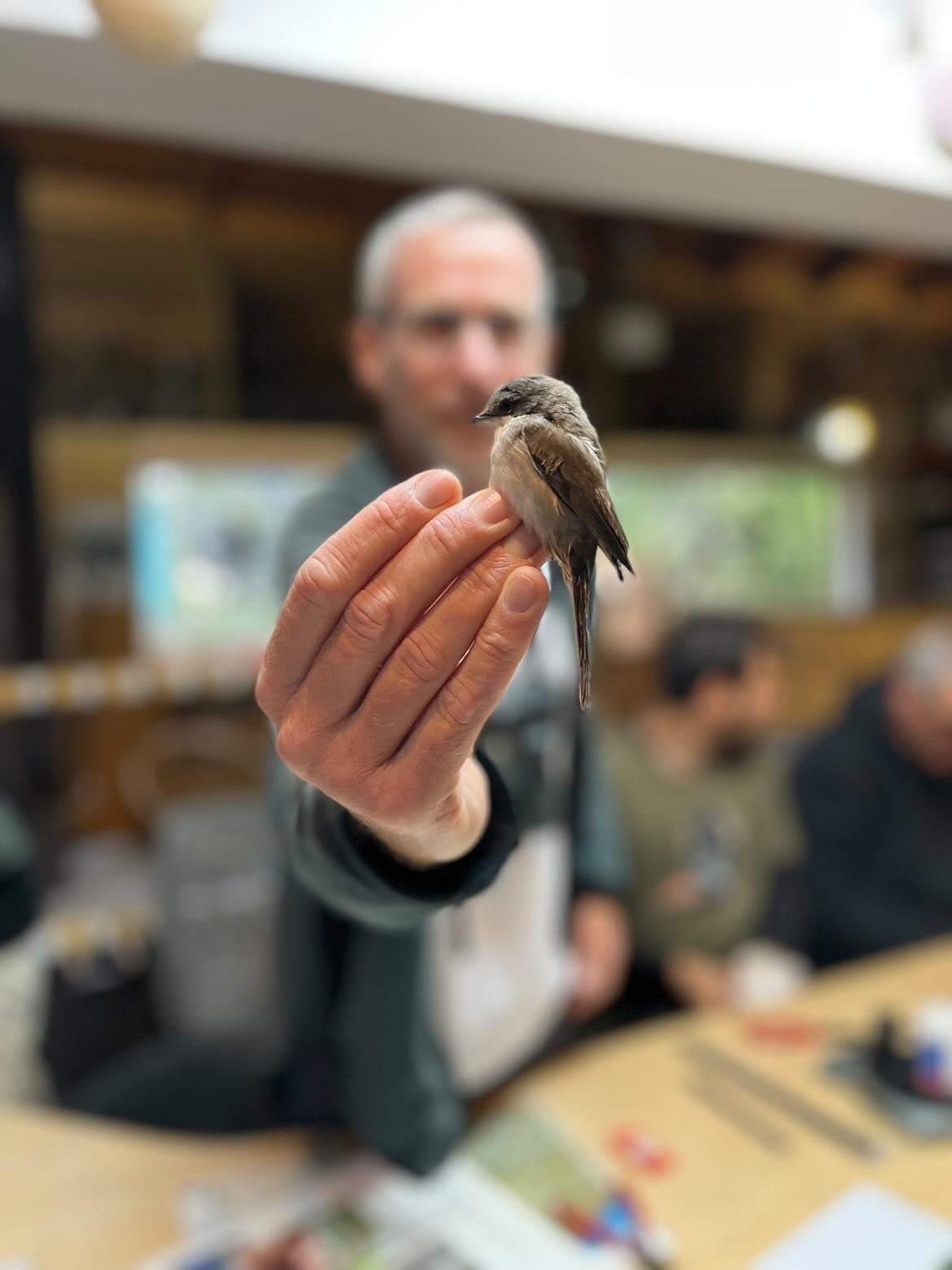
Upon arriving, we met Amir Balaban, co-director of the JBO and a captivating conservationist. Amir took us to the research center, an open countertop with a computer and display screen in a room decorated with bird science artifacts and colorful moving bags. Amir and his partners pulled tiny birds out of the bags, banded them, measured them, and documented their data. Amir said,
“By documenting the data, we transform an anonymous bird into an individual.”
Ornithologist Yoav Perlman noted that at the JBO, they “band 10,000 birds every year, most are migratory birds that land here to replenish their energy.” Amir explained that these birds had flown here from Africa, and the JBO could be their first stop on their migration route. “This goes to show the importance of preserving the stopover sites in the Middle East,” Amir emphasized, “maintaining these islands of nature.” Then he opened his hand, and a Lesser Whitethroat flew out, like a flash of wings into the sky.
Amir drew our attention to a framed envelope and carbon copy of a letter he received from Estonia in the early 2000’s. It said:
On the 12th of May 2001, found a little grey bird with one of the Jerusalem Bird Observatory bands on it’s leg. The bird was sick, and died on the 13th of May 2001.
This short message was extremely transformative, really putting wind in the sails of the JBO and affirming the impact of their mission.
“It’s not just about animals and biodiversity, it’s about people,”
Amir said, “this is why we have such a strong partnership from environmentalists around the world, because we need teamwork.” As we moved into the bird blind overlooking the exquisite Nyman pond, this sentence sat with me. This isn’t just about the birds, or just about Israel. We need global teamwork, we need each and every person to pitch in if we are going to create a sustainable system on our planet.
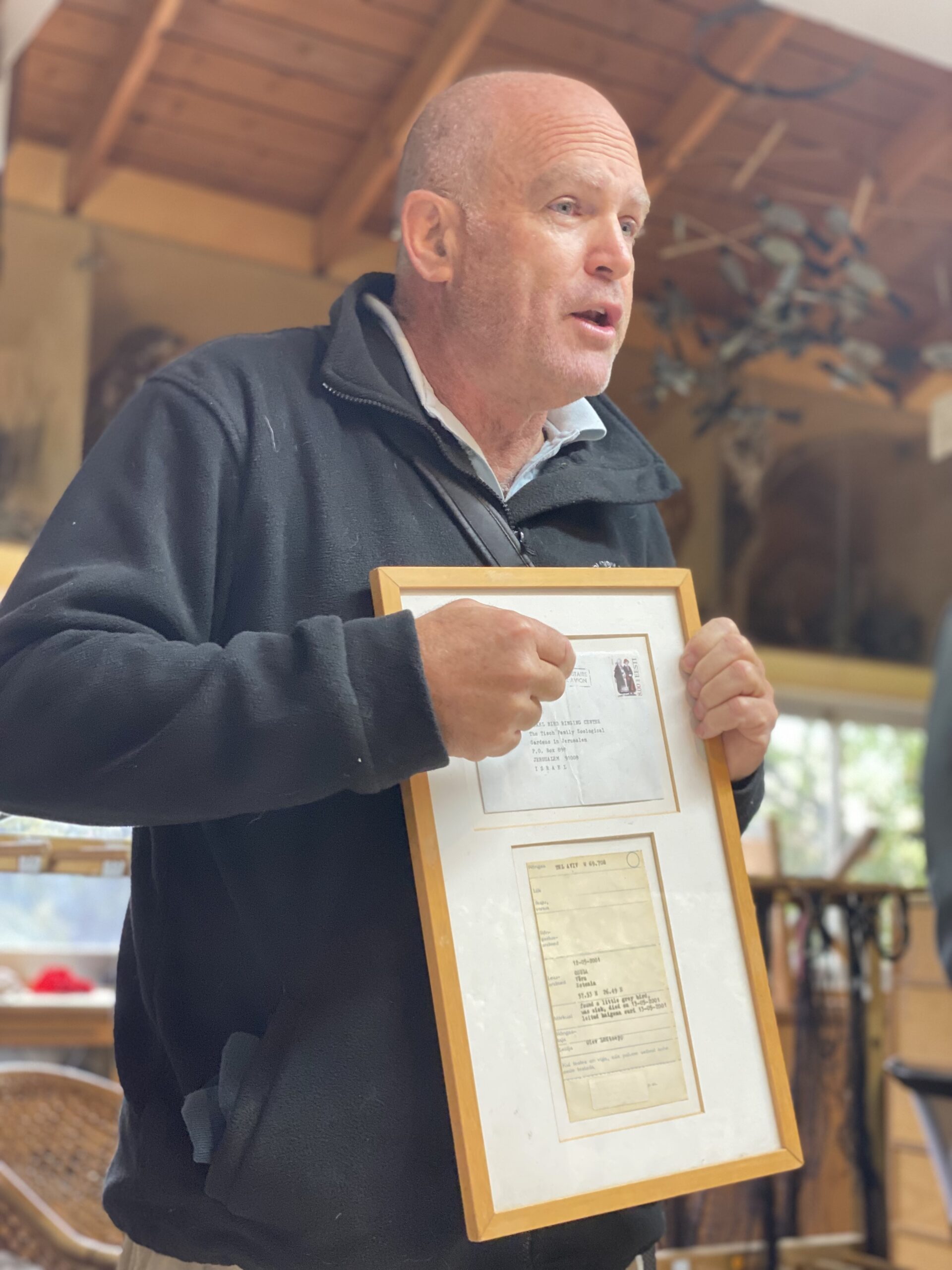
Gazelle Valley Park
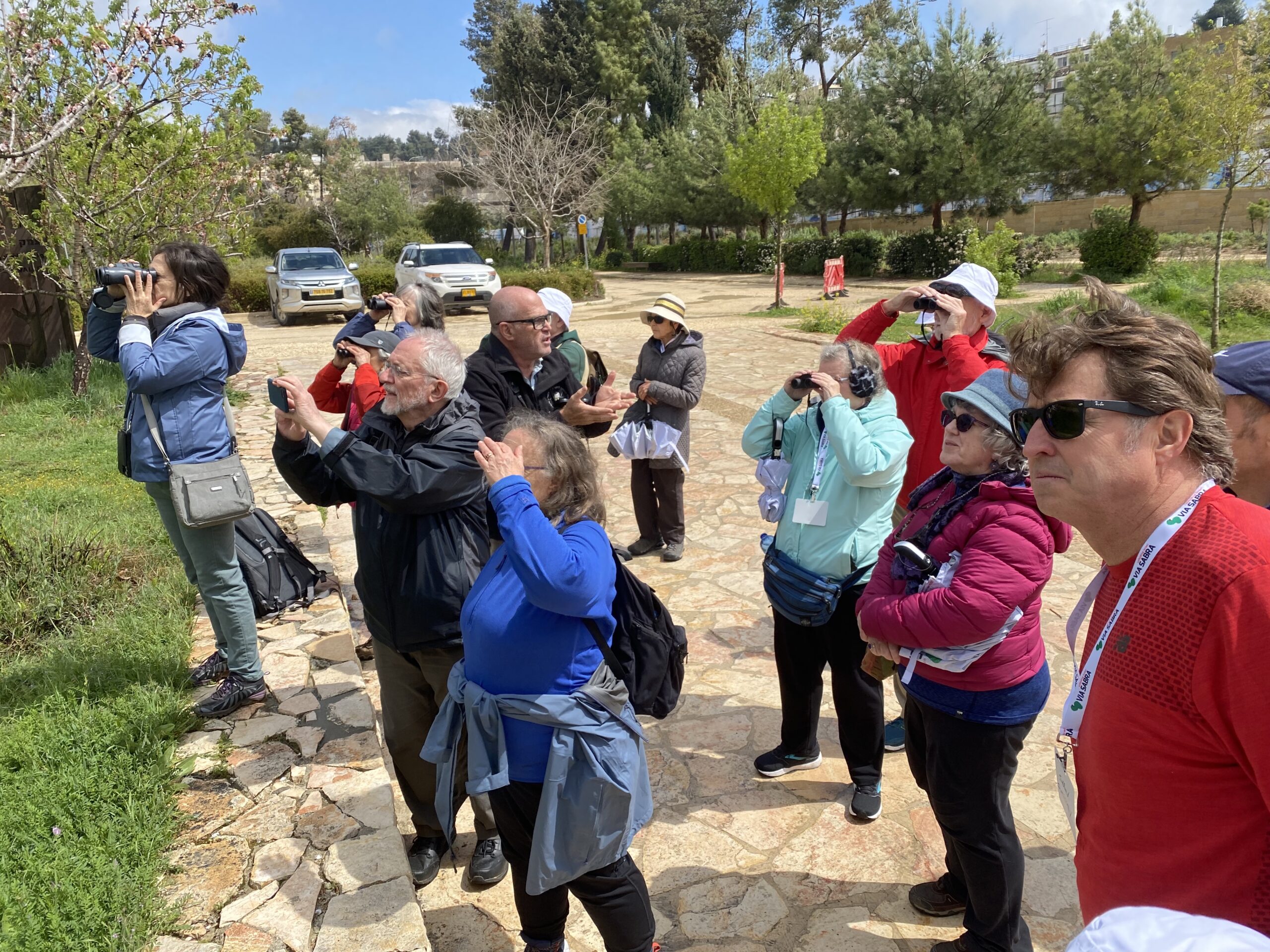
The sun came out just as we arrived at Gazelle Valley Park, warming us for a brief moment as Amir Balaban introduced us to the realization of his ecological vision. He called attention to the double gate at the entrance, noting how this barrier keeps predators out and ensures the endangered Israeli gazelles, that have been nearly exterminated due to hunting, don’t run into the streets of Jerusalem. “Tens of thousands of people visit this space annually, you see a lot of diversity and Israelis from all walks of life,” Reut, our tour guide, whispered to me. She was soon overpowered by Amir shouting about a shrike on a nearby rosebush, preening and scouting out prey. We all whipped out our binoculars to observe this elegant bird that triggered so much enthusiasm from Amir. It was truly a beautiful sight to witness, a memory that will stay with us long after we return to America.
We entered the main building just as more clouds began to appear. We were greeted by some SPNI employees and a few 18 year old students, who were there serving national service on the site instead of going to the army. I learned the story of one student there, Shira, who specialized in studying the endangered tortoises of Israel. Recently, there had been a flood, and Shira personally saved 19 of these jeopardized tortoises from drowning.
I got to touch and see up close a few artifacts collected on site, beautiful fossils and shells. A row of bags hung by the wall, filled with children’s binoculars, magnifying glasses, and activity workbooks for children to get engaged and involved in the space. Amir finished prefacing the space, showing us a gazelle antler and pelt they confiscated from hunters, and demonstrating their plans for a new space they are building that will include an underwater window for visitors to observe activity in the pond.
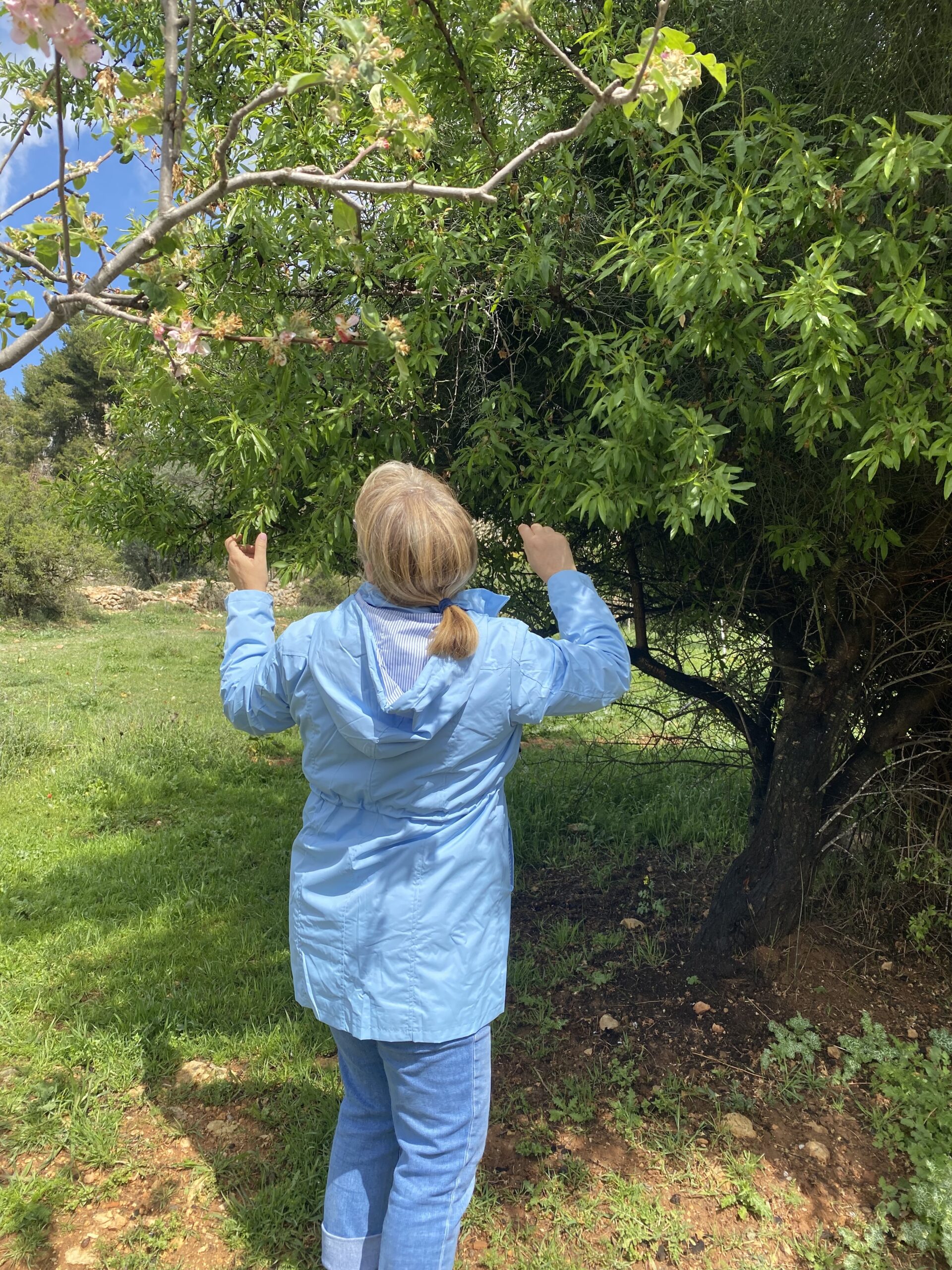
We headed outside and got a closer look at the flora and fauna of Gazelle Valley. A few pregnant females followed the male of their herd; Amir pointed out that this male in particular was nicknamed “Rambo” because of his big antlers, and almost on cue Rambo began marking a tree by rubbing his horns on the trunk. We saw coots and ducks in the pond that was constructed to naturally purify runoff water from Jerusalem. Amir guided us around the 65 acres of Gazelle Valley, stopping every now and then to identify wildflowers and edible green almonds that we got to pick from the tree and taste.
Amir stopped to show us the massive amounts of gazelle droppings, illustrating how the males use their potent excrement to mark the boundaries of their territories, while female gazelle droppings are odorless and much more sparse in their occurrence. He picked up a few gazelle droppings and asked if anyone wanted to smell. There was one taker, and he confirmed that the droppings were fragrance-free.
Our new executive director Rachel Canar, was experiencing Gazelle Valley in person for the first time, and she shared some of her thoughts with me as we walked back the way we came. Rachel was beaming as she realized,
“How extraordinary is it that all of these projects have such a multitude of beneficial outputs!”
“It’s good for the birds, it’s good for the gazelles, biodiversity, and people both locally and visiting. It also provides environmental cleanup,” Rachel continued, “this area used to be absolutely filthy and flooded with pollutants, runoff from the entire city of Jerusalem had collected in this valley, and this project created a natural filtration system that cleans the dirty water from the city.”
I nodded as I heard Rachel’s praise of Gazelle Valley, in total agreement and a shifted perspective of how incredible this transformed land was for human beings, for both the individual and society, and for the generations to come. We all concluded the tour with a newfound appreciation for this magnificent oasis in the heart of busy, urban Jerusalem.
Levi Eshkol House
We stopped at the Levi Eshkol House very briefly for a quick lunch and tour. The space was delightfully established, with a half covered outdoor space, a second floor of offices used by SPNI employees, and an airy and open bonus room on the third floor. We ate some delicious Israeli cuisine in this bonus room, and got to meet some of SPNI’s big leaders in Jerusalem.
After lunch, we walked around the museum that had masterfully seemingly frozen this historic home of the first three prime ministers of Israel. We saw home artifacts, such as kitchen and dining supplies, old telephones, and photographs belonging to Ben Gurion, Golda Meir, and Levi Eshkol. We ended the tour with a 15 minute video about Israel’s 6 day war and the political involvement as well as personal history of Levi Eshkol.
Wildfire Recovery of the Jerusalem Hills
Our last stop of the day was the Jerusalem Hills, an area recently destroyed by brutal wildfires. Amir Balaban met us again here, opening his discussion by reminding us that “bad things are often the beginning of a good thing.” He showed us how the burnt skeletons of the trees provided scaffolding for new plant life to cling to, and we saw firsthand this example of life born from the ashes of death.
Amir yanked a young tree, a Jerusalem Pine, out of the ground, and explained that these were the trees that caught fire so easily and shouldn’t grow back here again. Instead, he insisted, other Mediterranean trees should appear here, after they are spread by birds naturally. Amir gave us some mustard flower to taste, and as we watched the sun set over the Jerusalem hills, I was filled with gratefulness for SPNI and their work, putting together all the amazing details that make up the mosaic of a healthy environment in Israel.
